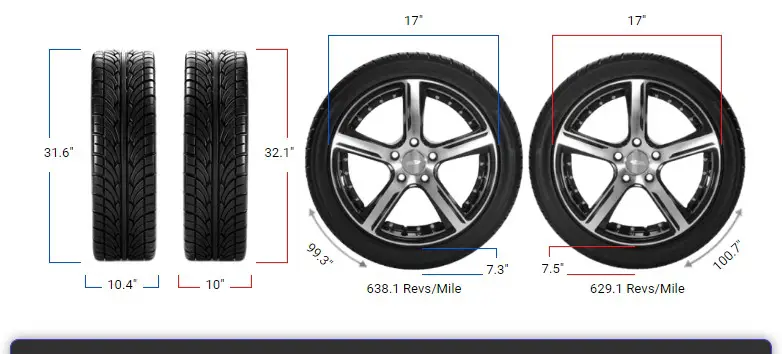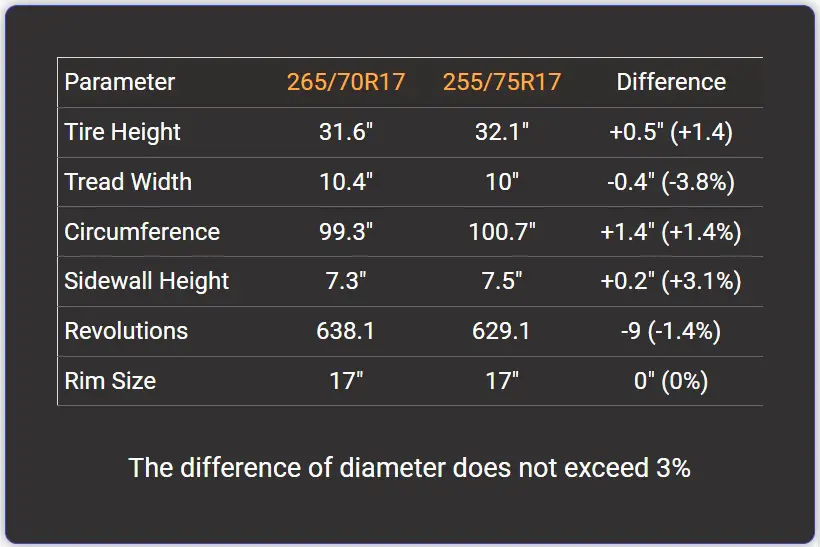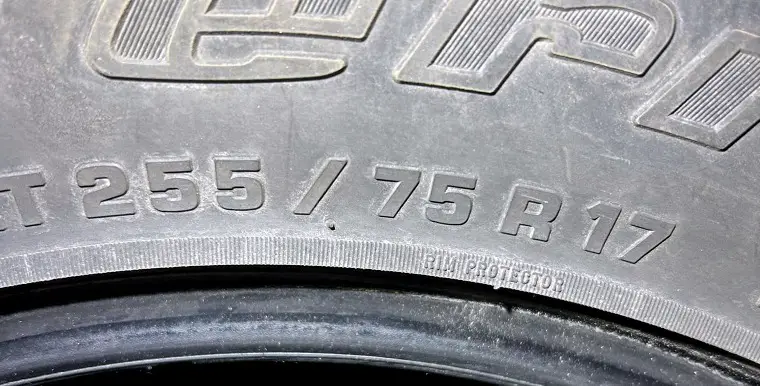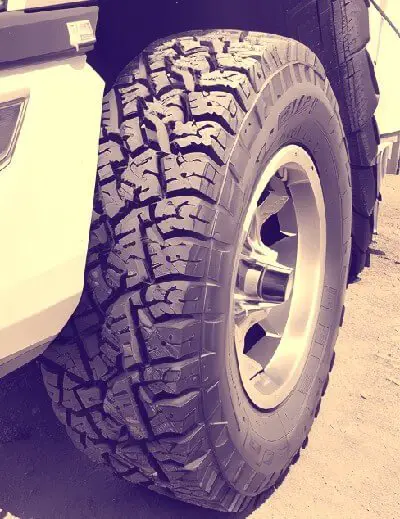Tire Size 265/70r17 vs 255/75r17

Switching from 265/70R17 to 255/75R17 tires is a relatively common practice, but it’s essential to understand the implications of this change. Here are the top 5 key points of switching from 265/70R17 to 255/75R17 tires
- The overall diameter difference of 1.4% is within the acceptable range
- The 255/75R17 tires are 0.39 inches (10 mm) narrower
- The 255/75R17 tires have a 0.23-inch (5.75 mm) taller sidewall
- The switch may slightly improve ride comfort, fuel efficiency, and off-road performance
- The narrower width may minimally reduce handling responsiveness on-road
265/70r17 vs 255/75r17 Table
The 255/75R17 tires are 0.39 inches (10 mm) narrower but have a 0.23-inch (5.75 mm) taller sidewall compared to the 265/70R17 tires.

Fitment Guide
It’s crucial to ensure that the overall diameter difference falls within the acceptable range of 3%. In this case, the diameter difference is 1.4%, which is well within the limit. As a result, the interchange between these two tire sizes is generally recommended without requiring any significant adaptations.
On-Road Impact
Switching to 255/75R17 tires can have several effects on your vehicle’s on-road performance. Here’s what you can expect:
- Ride Comfort: The taller sidewall of the 255/75R17 tires provides a bit more cushioning, which can lead to a slightly smoother ride, especially on bumpy roads.
- Handling: The narrower width of the 255/75R17 tires may result in a minor reduction in handling responsiveness, particularly during cornering or sudden maneuvers. However, this difference is likely to be barely noticeable to most drivers.
- Speedometer Accuracy: The 1.4% difference in revolutions per mile will cause a slight speedometer discrepancy. At a indicated speed of 20 mph (32.19 km/h), your actual speed would be 20.29 mph (32.65 km/h). This difference is negligible and unlikely to cause any issues.
- Fuel Efficiency: The narrower width and taller sidewall of the 255/75R17 tires may provide a small improvement in fuel efficiency due to reduced rolling resistance.

Off-Road Impact
If you frequently take your vehicle off-road, switching to 255/75R17 tires can offer some advantages:
- Ground Clearance: The taller sidewall of the 255/75R17 tires will slightly increase your vehicle’s ground clearance by about 0.23 inches (5.75 mm). While this difference is minimal, it can be beneficial when navigating rough terrain or obstacles.
- Traction: The narrower width of the 255/75R17 tires can provide better traction in soft surfaces like mud or sand, as the weight of the vehicle is concentrated on a smaller area, allowing the tires to dig in more effectively.
- Durability: The taller sidewall of the 255/75R17 tires offers more flexibility and protection against damage from rocks, roots, and other off-road hazards.
What is the Difference Between 265/70R17 and 255/75R17?
The main difference between 265/70R17 and 255/75R17 tires lies in their width and sidewall height. The 265/70R17 tire is 0.39 inches (10 mm) wider than the 255/75R17 tire, while the 255/75R17 tire has a 0.23-inch (5.75 mm) taller sidewall than the 265/70R17 tire.
These differences in dimensions can affect various aspects of vehicle performance, such as handling, ride comfort, and off-road capabilities.

Can I Use 255/75R17 Instead of 265/70R17?
Yes, you can use 255/75R17 tires instead of 265/70R17 tires. The overall diameter difference between these two sizes is 1.4%, which falls within the generally acceptable range of 3%.
This means that switching from 265/70R17 to 255/75R17 tires should not cause any significant issues with vehicle handling, speedometer accuracy, or overall performance.
How Much Taller Is a 255/75R17 Tire Than a 265/70R17?
A 255/75R17 tire is approximately 0.45 inches (11.5 mm) taller than a 265/70R17 tire. The overall diameter of the 255/75R17 tire is 32.06 inches (814.3 mm), while the 265/70R17 tire has a diameter of 31.61 inches (802.8 mm).
How Much Wider is a 265/70R17 Tire Than a 255/75R17?
A 265/70R17 tire is approximately 0.39 inches (10 mm) wider than a 255/75R17 tire. The width of the 265/70R17 tire is 10.43 inches (265 mm), while the width of the 255/75R17 tire is 10.04 inches (255 mm).
Our Observation
After analyzing the differences between 265/70R17 and 255/75R17 tires, we conclude that switching to 255/75R17 tires is a viable option for most vehicles.
The overall diameter difference of 1.4% is well within the acceptable range, and the impact on on-road performance is minimal. The slight improvements in ride comfort, fuel efficiency, and off-road capabilities may even be seen as advantages by some drivers.
However, it’s essential to consider your specific driving needs and preferences before making the switch, as the narrower width and taller sidewall may not suit everyone’s requirements.

Meet Caitlin McCormack, a Tire Size Expert and Blogger Passionate About Everything Related to Tires. With Years of Experience in the Tire Industry, Caitlin Has Become an Expert in Tire Sizes and Their Impact on Vehicle Performance.
